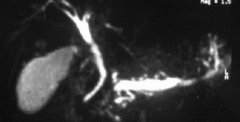读医学网
2011年英国哮喘管理指南
发布时间:2014-05-20 09:24 类别:呼吸系统疾病 标签:electronic wide adapted 2003. 来源:丁香园
In 1999 the British Thoracic Society (BTS) and the Scottish Intercollegiate Guidelines Network (SIGN) agreed to jointly produce a comprehensive new asthma guideline, both having previously published guidance on asthma. The original BTS guideline dated back to 1990 and the SIGN guidelines to 1996. Both organisations recognised the need to develop the new guideline using explicitly evidence based methodology. The joint process was further strengthened by collaboration with Asthma UK, the Royal College of Physicians of London, the Royal College of Paediatrics and Child Health, the General Practice Airways Group, and the British Association of Accident and Emergency Medicine (now the College of Emergency Medicine). The outcome of these efforts was the British Guideline on the Management of Asthma published in 2003. The 2003 guideline was developed using SIGN methodology,adapted for UK-wide use. Electronic literature searches extended to 1995, although some sections required searches back as far as 1966. The pharmacological management section utilised the North of England Asthma guideline to address some of the key questions on adult management.3 The North of England guideline literature search covered a period from 1984 to December 1997, and SIGN augmented this with a search from 1997 onwards.
Since 2003 sections within the guideline have been updated annually and posted on both the BTS (http://www.brit-thoracic.org.uk) and SIGN (http://www.sign.ac.uk) websites. In 2004 the sections on pharmacological management, acute asthma and patient self management and compliance were revised. In 2005 sections on pharmacological management, inhaler devices, outcomes and audit and asthma in pregnancy were updated, and occupational asthma was rewritten with help from the British Occupational Health Research Foundation.
In 2006 the pharmacological management section was again updated. While the web-based alterations appeared successful, it was felt an appropriate time to consider producing a new paper-based version in which to consolidate the various yearly updates. In addition, since 2006, the guideline has had input from colleagues from Australia and New Zealand.
The 2008 guideline considered literature published up to March 2007. It contains a completely rewritten section on diagnosis for both adults and children; a section on special situations which includes occupational asthma, asthma in pregnancy and the new topic of difficult asthma; updated sections on pharmacological and non-pharmacological management; and amalgamated sections on patient education and compliance, and on organisation of care and audit. The 2009 revisions include updates to pharmacological management, the management of acute asthma and asthma in pregnancy. Update searches were conducted on inhaler devices but there was insufficient new evidence to change the existing recommendations. The annexes have also been amended to reflect current evidence. The 2011 revisions include updates to monitoring asthma and pharmacological management, and a new section on asthma in adolescents. The timescale of the literature search for each section is given in Annex. It is hoped that this asthma guideline continues to serve as a basis for high quality management of both acute and chronic asthma and a stimulus for research into areas of management for which there is little evidence. Sections of the guideline will continue to be updated on the BTS and SIGN websites on an annual basis.
- 猜你会喜欢....





